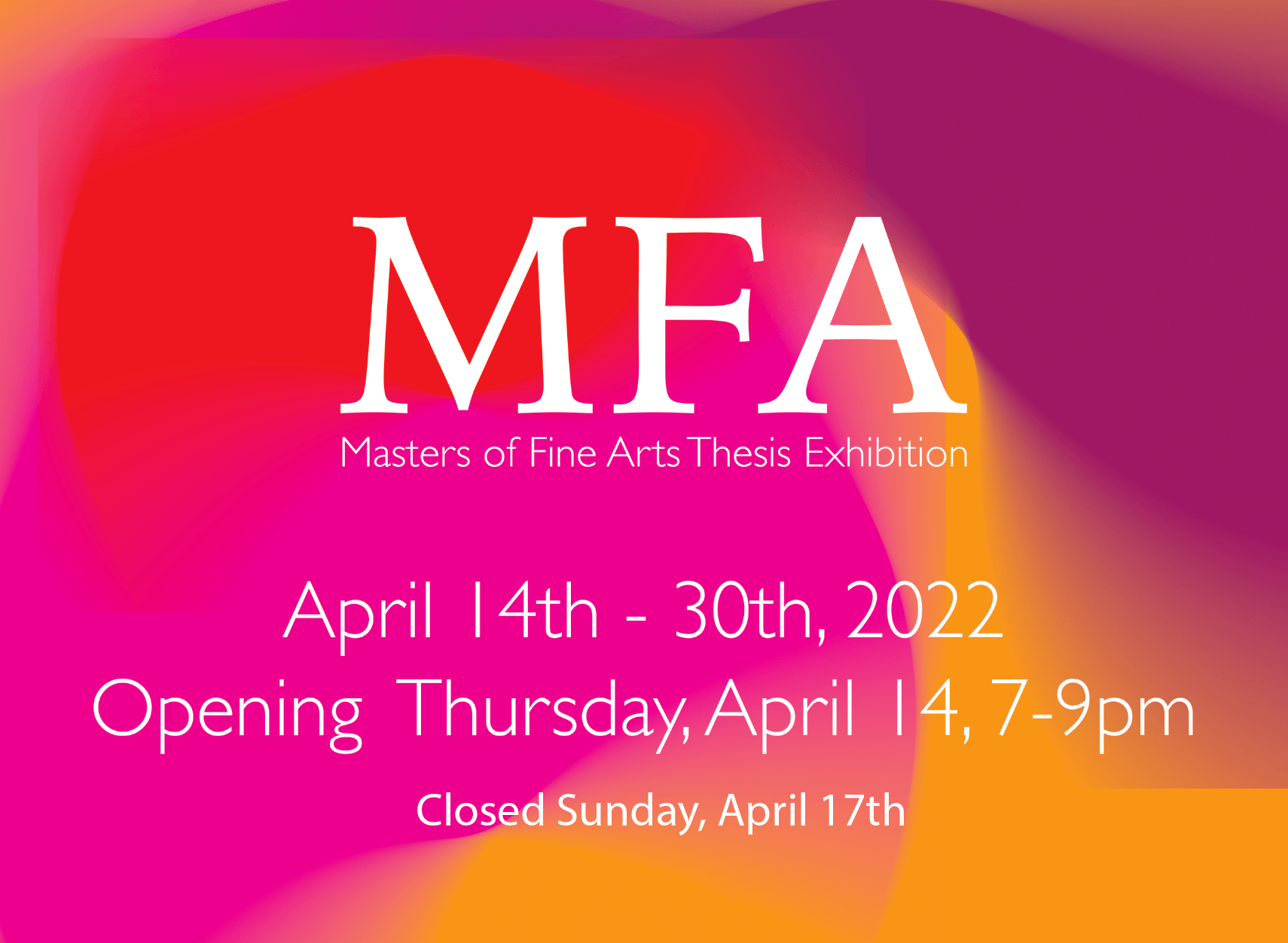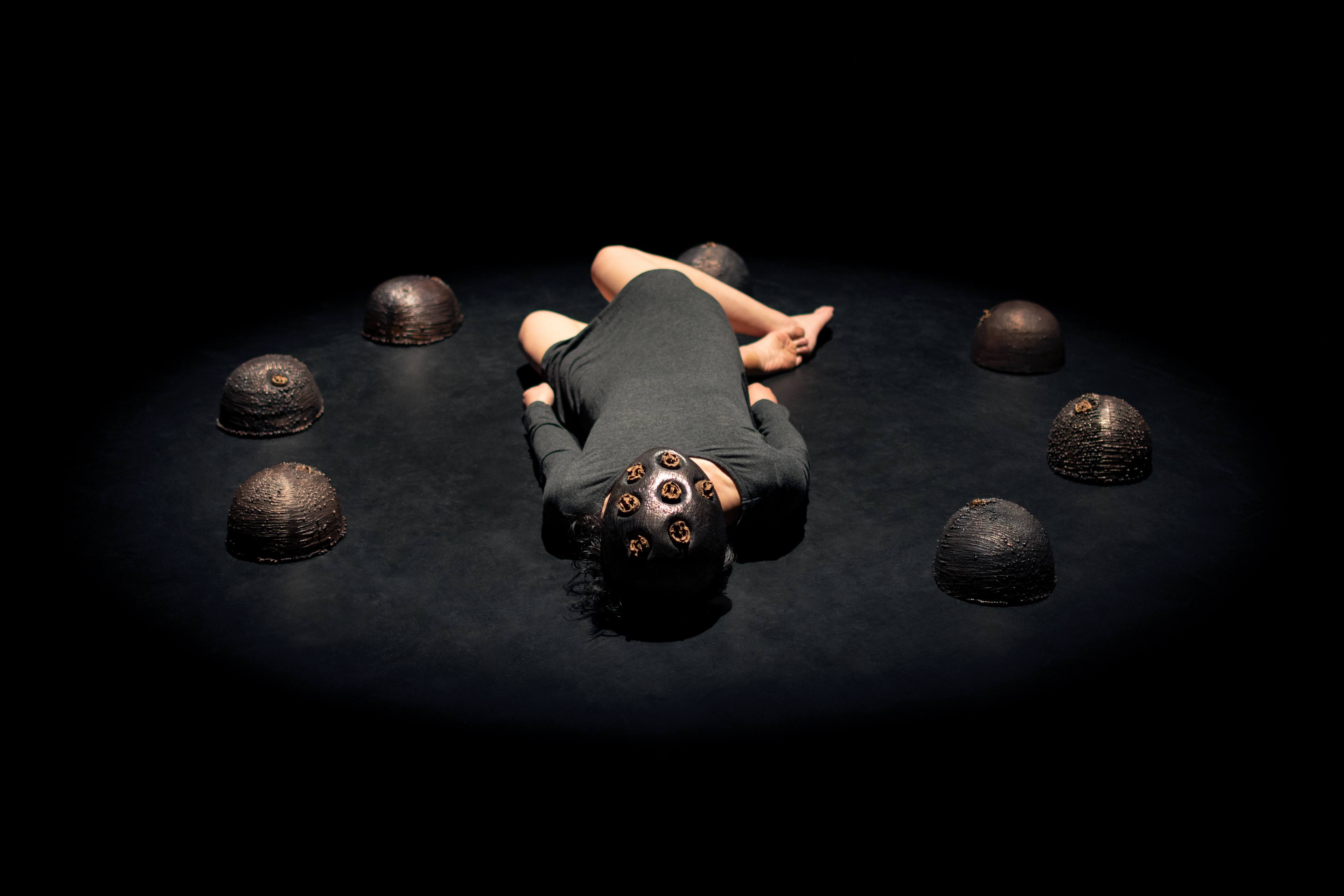Isabel Zeng

Isabel Zeng

Description of Work
Decollate - 2020 - Double channel video installation
Decollate - 2020 - Brass, Fiberglass
Depart - 2022 - Single channel video
Fingertips - 2022 - Single channel video
Fingertips - 2022 - FormLabs® clear resin, European buckthorn
What’s Left of Us - 2021 - Five channel video installation, Copper, Hollow walnuts
Artist Statement
My work explores the lived body in relationship to wearable objects. I adopt the concept of embodied subjectivity developed by Maurice Merleau-Ponty, Edmund Husserl, and Lauren Berlant as a philosophical foundation and explore this body-object relationship through the lens of craft, materiality, and performance.
A wearable object is often considered a bold statement carried on the body that invites social commentary. This can be a statement that expresses status, identity, desire, or even longing. The ways that the body interacts with the object elevate the statement from merely being about to being. Largely inspired and influenced by Rebecca Horn and Nick Cave, in my work, this body-object interaction is an experience shared with the viewers via performance and video installation. Specifically, the objects I built tend to restrain the body, and the performances express the responses of the body to the restraint, such as struggling, resisting, transforming, or internalizing.
Decollate, a double-channel performance-based video installation, was inspired by the rivalry between mind-body dualism, most famously defended by René Descartes, and the theory of embodied subjectivity, supported by Maurice Merleau-Ponty and Edmund Husserl. In the video, the performer (myself), wearing a 28-inch-wide brass neck collar, reaches into a spinning cotton candy machine with her bare hands, collects and feeds herself cotton candy, attempting to bypass the collar. Materiality plays a significant role in delivering the concept. The golden brass neck collar, inherits the historical influence of a ruff or a millstone collar from the mid-sixteenth century as a portent symbol of status and wealth. The pink cotton candy, on the other hand, delivers the raw desire and intrinsic motivation through a child’s gaze. The placement of the cotton candy machine, which is right below pelvis height covering the genital area of the performer, heightens this symbolic role. As the performance progresses, grey burnt fiberglass gradually appears in and fills the golden neck collar, materializing the evidence of the heart-mind battle. The materiality trick played here is the natural appearance of fiberglass which fully resembles cotton candy— pink and fibrous—although hazardous in a very different way. The striking contrast of the appearances of fiberglass before and after being burnt represents the transition from the satisfaction of bodily instincts to the dissatisfaction of rational minds. This material also carries the battle through the end by changing the visual density of the neck ruff collar, enhancing the degree of restraint that it symbolizes.
In my MFA exhibition, this video installation consists of two separate screens with the same dimensions. The top screen is installed horizontally, framing the head of the performer, and the bottom one is placed vertically, centered to and below the top screen framing the body from neck down. The T-shaped composition explicitly visualizes a mind-body separation while presenting a performance which implicitly shares with the viewers the inevitable mind-body connection with the perfect synchronization of motions traveling back and forth between two screens. By performatively engaging a well-crafted restraint (the neck collar) and an instinctive temptation (the cotton candy), this performance expresses an overwhelming sense of irony, and presents a constant battle between the heart and the mind.
The other non-narrative performance video, Fingertips, also promotes sensory experiences of the body. Inspired by the performative work “Finger Gloves” by Rebecca Horn, the set of wearable objects consists of five enlongated prosthetic finger extensions for a single hand, 3D modeled and printed using clear Formlabs resin. The end of each finger extension was inserted with a peg of tree branch carved into a cone shape, exposing only the cross-section of the tree, visually as an abrupt end of the “fingertip.” In the video, the hand wearing the finger extensions constantly reach toward the camera, confronting the viewers, futilely attempting to sense through the glass. The video was shot with shallow depth of field. In close framing, “fingertips”—the cross-sections— come in and out of focus either tapping, knocking, or caressing the screen. The form, materials, and process of this piece all serve to express the conflict between nature and technology. Technological advancement extends our reach beyond what our body allows us, while at the cost of truncating our sensory experience.
Battling against restraint possibly is considered the most basic, raw, instinctive reaction of the body, or more philosophically, the self. If the battle is lost, however, the body tends to embrace the restraint and possibly internalize it. Living in a modern civilization, we present our identity to the world through the roles we play and the personas we choose. Eventually, the self is formed by internalizing all these personas shaped by our life experience. What’s Left of Us communicates this embodied experience to the viewers. For this performance, I constructed a series of seven masks, representing seven personas, given that the word “persona” originally refers to a theatrical mask in Latin. Each mask is copper-electroformed over hand-carved molds. Since the electroforming process has highly random factors, the surface texture and density of each masks varies widely even though they were all initially created from nearly identical molds. This process metaphorically translates into the journey of the self being transformed and shaped along with its experiences. Also, each mask has a single piercing, with a partially chewed-through hollow walnut set in it. The symbolism of the walnuts is reviewed through the same process described above— except it’s done by nature, and the metamorphosis is accomplished by subtraction instead of growth.
Based on the narrative of the performance-based video, in a black void, the performer encounters in total seven personas, all with identical body, wearing a mask with a single piercing, repeating a single motion while consciously holding the mask on their face. According to ancient Taoism, human identity is represented by the seven orifices on a man’s face, allowing one to see, hear, smell, and eat. Here for each persona, the single opening serves as a partial human identity. In a contemporary context, masks often represent intellectual restraint, with examples including Avatar by Lauren Kalman and the mask series by Matt Lambert. In What’s Left of Us, the body fully embraces such restraint by limiting its social identity. The viewers will experience this performance video in my MFA exhibition in a non-linear manner, along with the masks, in a semi-enclosed construction.
Depart delivers a concept similar to What’s Left of Us, except in this performance, the body explicitly transform along with the restraint. The large-scale wearable object is made with brass mesh and dark colored cement. Its geometric form is inspired by Oskar Schlemmer, Kurt Schwitters, and the style of Brutalist architecture. Cement was chosen to create visual weightiness, and the exposed gold colored mesh symbolizes the past glory of aged architecture. As the object is placed on the body, it forces the wearer to adopt the posture of a puppet, with the head tilted to the side, given its weight and structure. Five brass wires extends out from each of the two ends of the object, connecting to five brass rings. The wearer puts on the rings on each hand and pull the piece against the neck, enhancing the posture. The object, together with the body posture that it forces into, display the irony that the marionette is also the marionettist, that we are controlled by things we built and, therefore, voluntarily strip away the self and hide behind the history.
In the video, the performer holds the puppet posture in the wearable object standing in an environment which appears to be an abandoned building. Passersby enter the frame and walk past the performer, possibly bumping into her without any further interaction. The performer walks backwards in the middle of the crowd, to the opposite direction, and eventually backs into the wall and fades white. In the next scene, the performer appears in an empty black void, continues to walk backwards and finally collapses into fetal position. The motions and body language of the performer and passersby are essential for the performance. Inspired by Bill Viola, they are heightened by being put in slow motions, which builds a more intimate and intense connection between the viewer’s emotion and the performer’s, by allowing the viewers to not only observe, but also ponder and connect with the subjects in the performance.
Marianna Simnett once described her artistic purpose, “… I seek or make apparent the impossible gulf between my pain and someone else’s pain, or my lack of pain and someone else’s pain, my imagination of what that pain was.” This statement comes very close to my own understanding of embodiment and its ability to evoke empathy. Moving forward, I will continue to focus on a combination of scholarly research activity and studio practice using craft, performance, and video installations to explore— and invite the viewers to explore the concept of embodiment in contemporary context.


Updated: 04/12/2022 03:57PM
